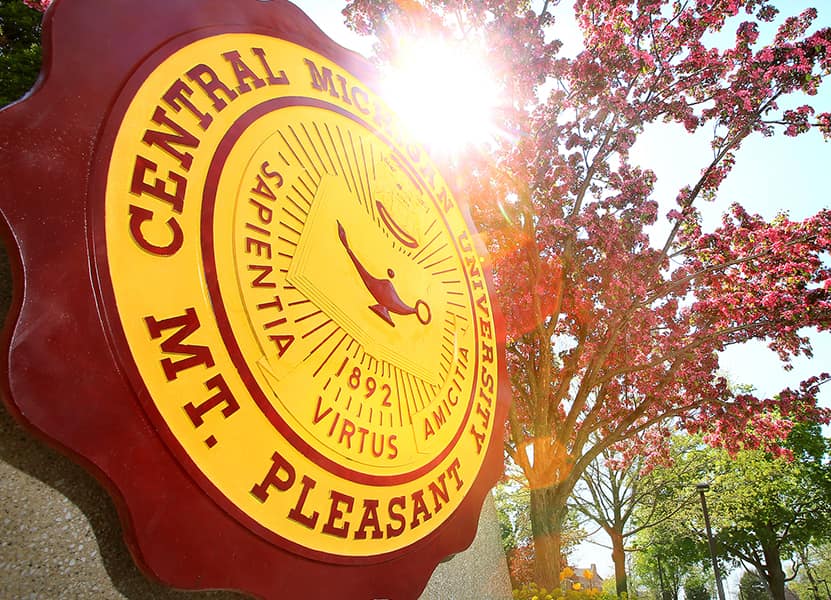This collection consists mainly of correspondence dealing with the planning, financing, and construction of the SAC. Key people involved in the process and correspondences were Jerry Scoby (Director of Business Services and Assistant Vice President for Business Affairs), Kim Ellertson (Vice President of Business and Finance), and Tim Jones (Director of Campus Recreation).
Box 1 in this collection contains documents generally focusing on the immediate planning and building of the recreation center, 1983-1990.
Phase I of the SAC Project began in 1983 and focused on proposals for and the planning of the campus’s recreation building, and the renovation of several other buildings on campus, including: remodeling the President’s house, the physical plant building, and a library addition.
There are numerous correspondences between the University and the Nuveen Co., which was chosen to be the senior manager of the projects and the financial advisor. The letters discuss different funding avenues for the projects, including the use of student bonds.
In addition, there is documentation of several other capital projects that the university was planning and funding in conjunction with the SAC. One such project was the Biomass Wood Fuel Plant and Telephone Systems Project (aka Woodchip).
Phase II of the project began in 1987 and comprised the final approval of designs and schematics of the building, and topographical surveys of the land. Most of the letters are between Anthony Paparella, the University Architect, and TMP Associates, the firm chosen for design development.
Included are a sampling of Construction Invoices, 1986-2000, that show areas of main concern in the building, as well as issues that arose during construction and additions and subtractions that were made due to budgetary limitations. There are documents discussing if a student membership fee should exist and how it should be implemented, tuition-based or as an outside fee. Also included are financial records documenting the University’s attempt to raise $25 million for the multiple projects, Bond Revenue Statistics, 1987-1989.
Box 2 contains documents pertaining to after the recreation center was opened, 1990-2003, as well as other properties that the University owned.
Letters discussing food services that should be offered in the new building are part of the collection, including the mission statement of FAST BREAK, a healthy food store. The internal audit of 1992 listed the weak points of the SAC, such as the definition of outside users and funding for equipment replacement, and offered recommended solutions.
In the ‘Budget and Finance’ folder there are letters that address the financial structure of the SAC. This was a main concern because the SAC was originally funded entirely from the General Fund, which meant that all of the money its services made would automatically go back into the University and be equally divided among other campus institutions. There was also concern that under this structure the building would continuously be in a state of financial default. In order to avoid this, administrators of the SAC wanted it to be listed as an auxiliary institution of the University.
There is also a folder of issues that the SAC faced. Issues included, how encompassing the University’s insurance was in relation to unauthorized access of children and teams granted by current employees, and illegal entry by students using fake or duplicate IDs. There is a response written by Kim Ellertson concerning an article titled, “Staff ignored threat pools of blood posed.” There was also concern over improper videoing and photographing of people working out, as well as the loss of intramural sports fields due to the new football stadium and the expanding network of new facilities related to the SAC. An unusual issue that arose was the public protest following an Anheuser Busch visit. According to the letters, Anheuser set up their tent in the SAC on the same day as the Isabella County United Way was hosting a Red Hacker carnival for children. The matter worsened because a one-day liquor license was purchased for the SAC and the famous “Bud Girls” were allowed to freely walk around the building. Employees of the SAC felt that by allowing this to happen, especially during a children’s day, the University was living up to its party college name instead of dispelling it.
This box also contains several plans to try to offset the building costs of the SAC, including: a market plan to attract more outside donors and the selling of numerous University-owned properties.
Interesting documents to note are those concerning Riverwood Golf, which document the University’s desire to purchase a golf course, and those concerning the Ann Arbor Railroad Company when the University attempted to purchase the tracks that run through campus.
Processing Note: During processing approximately 0.25 cubic feet of duplicate materials were withdrawn from the collection and shredded.
Organizational History:
Groundbreaking for the Student Activity Center (SAC), at Central Michigan University, took place on April 28, 1988. The $15.4 million complex was officially dedicated on October 4, 1990. In its first week of operation, more than twenty thousand people visited it.
The 175,000 square foot facility was built as an addition to the Rose Center. Considered one of the finest recreational facilities in the country, the facility provides Nautilus equipment and free weights, racquetball, basketball and volleyball courts; a bowling alley; and an Olympic-sized swimming pool. Facilities are provided for aquatics, weight fitness, jogging, bowling, billiards, aerobics, racquetball, archery, golf ball driving, table tennis, basketball, volleyball, badminton, tennis, floor hockey, indoor soccer, dances, movies and other various kinds of leisure activities. (This information is from: Clarke Historical Library; CMU Existing Buildings, Student Activity Center webpages, accessed in April 2015.)
